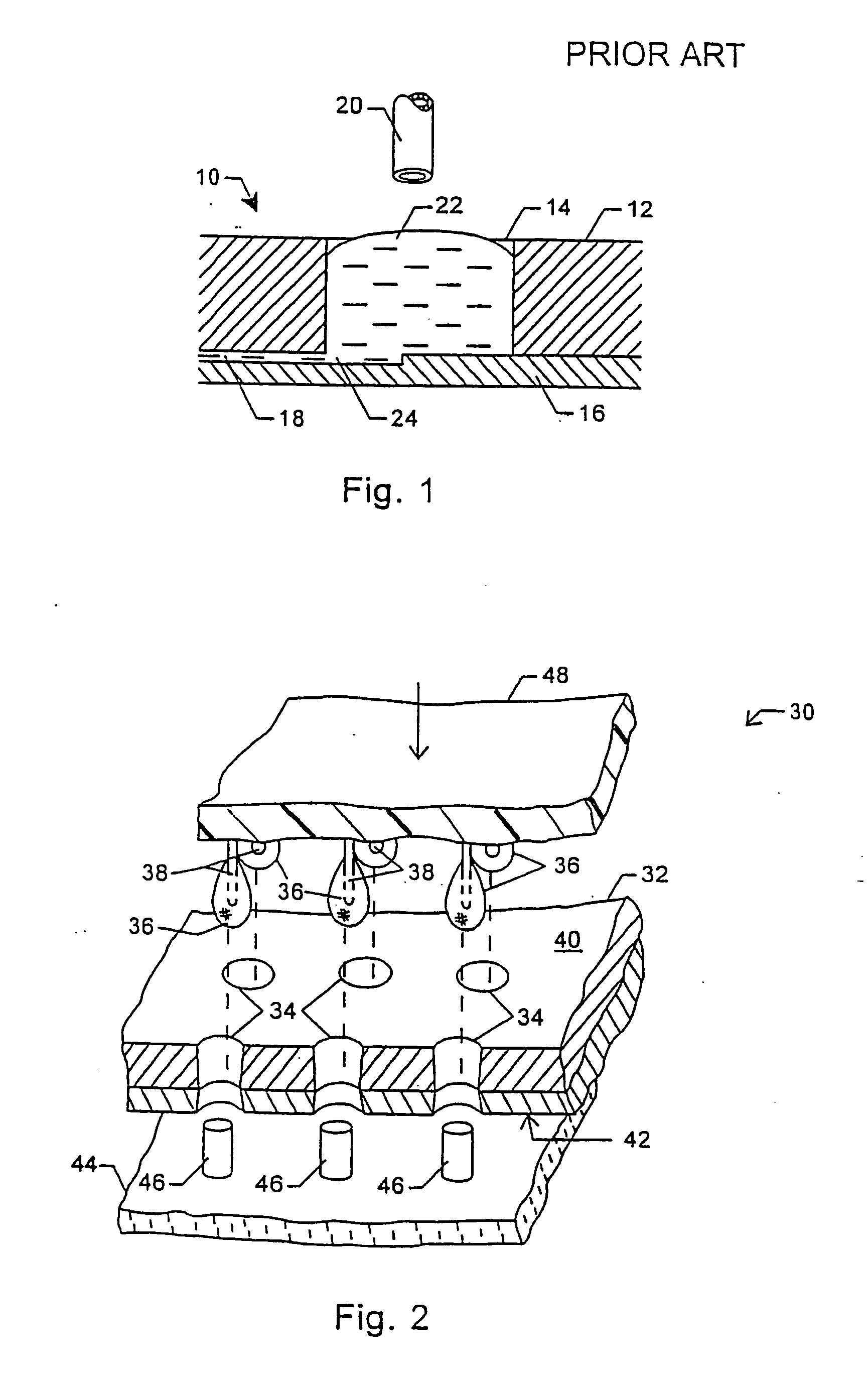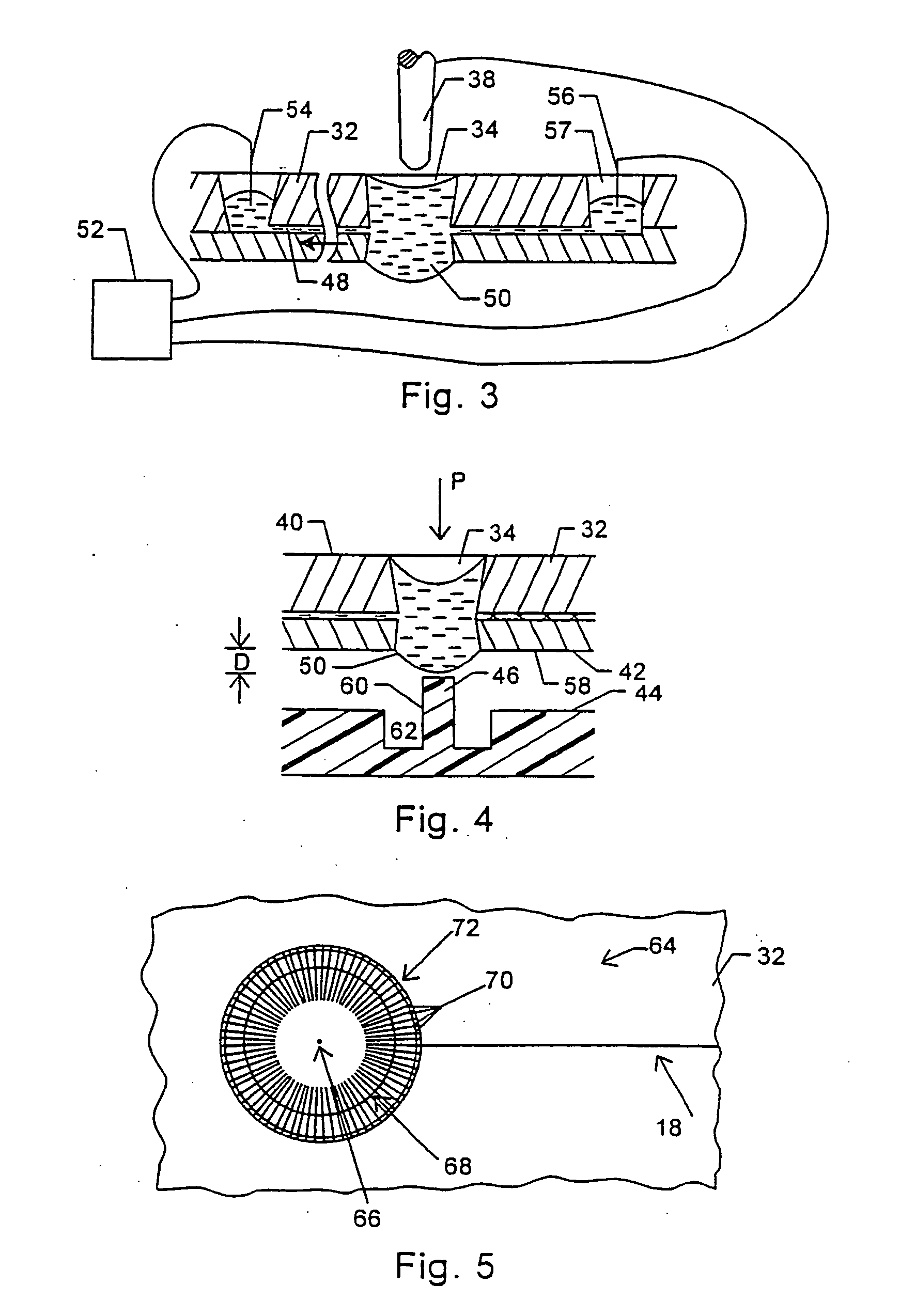Microfabricated structures for facilitating fluid introduction into microfluidic devices
- Summary
- Abstract
- Description
- Claims
- Application Information
AI Technical Summary
Benefits of technology
Problems solved by technology
Method used
Image
Examples
Embodiment Construction
[0028] A typical microfluidic introduction system and method is schematically illustrated in FIG. 1. A substrate 10 generally comprises an upper portion 12 through which a port 14 has been drilled. A lower portion 16 is bonded to upper portion 12, the lower portion having a microfluidic channel 18 which is in fluid communication with port 14. A pipette 20 delivers fluid 22 to port 14, typically relying on pneumatic and / or hydraulic pressure to deposit the fluid in the port.
[0029] Work in connection with the present invention has identified failure modes which could prevent fluid 22 from reaching channel 18, thereby interfering with the intended operation of microfluidic substrate 10. In the first failure mode, any particles in the fluid, in the pipette, or in the port may flow with the fluid from the port toward channel 18. Particles which are not large enough to enter microfluidic channel 18 will be deposited at channel entrance 24, thereby blocking flow from the port to the chann...
PUM
 Login to View More
Login to View More Abstract
Description
Claims
Application Information
 Login to View More
Login to View More - R&D
- Intellectual Property
- Life Sciences
- Materials
- Tech Scout
- Unparalleled Data Quality
- Higher Quality Content
- 60% Fewer Hallucinations
Browse by: Latest US Patents, China's latest patents, Technical Efficacy Thesaurus, Application Domain, Technology Topic, Popular Technical Reports.
© 2025 PatSnap. All rights reserved.Legal|Privacy policy|Modern Slavery Act Transparency Statement|Sitemap|About US| Contact US: help@patsnap.com



